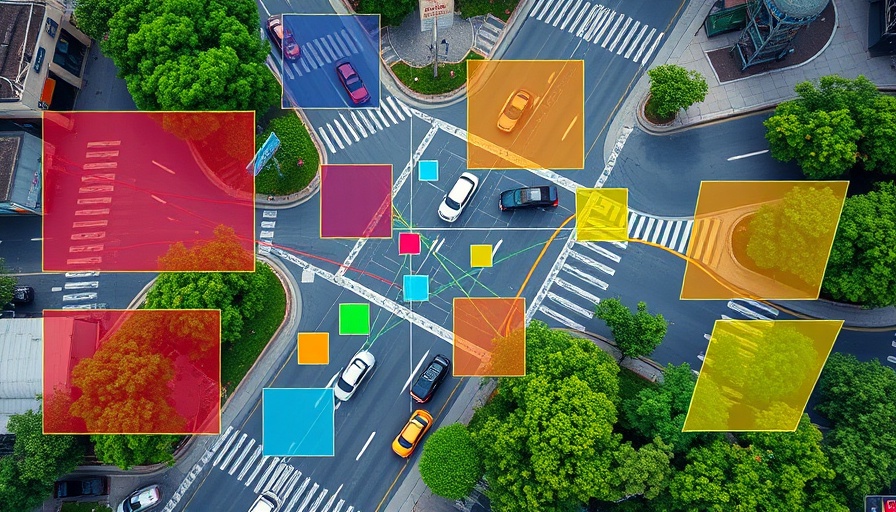
Unlocking the Power of Computer Vision for AI Builders
In the realm of technology, visual data plays a crucial role; in fact, it comprises 90% of the information processed by the human brain. Recognizing this foundational element, Roboflow emerges as a pioneering force aiming to democratize access to computer vision technology for developers and businesses alike. Founded to bridge the gap between complex AI systems and everyday users, Roboflow has gained the trust of over a million developers and half of the Fortune 100 companies, all in pursuit of making the world programmable through visual recognition.
Roboflow Universe: A Treasure Trove for Developers
At the core of Roboflow's offering is the Roboflow Universe. This platform houses the largest collection of open-source computer vision datasets and models available, designed to streamline the process of model training and deployment. These resources cater not only to tech-savvy engineers but also to organizations eager to leverage visual AI solutions in various sectors including manufacturing, healthcare, and automotive industries. CEO Joseph Nelson notes that Roboflow’s mission includes aiding manufacturers improve production efficiency and healthcare providers enhance diagnostic accuracy.
The Transformative Impact on Industry
Roboflow is already proving its value across a multitude of sectors. In manufacturing, for instance, companies utilize its technology to automate quality control systems, ensuring defects are identified and addressed in real-time. This level of automation not only drives efficiency but also contributes significantly to worker safety.
Consider the agricultural sector; robots equipped with computer vision can monitor crop health and optimize farming practices, while in automotive settings, enhanced production oversight reduces errors and increases throughput. With projections suggesting that over $50 trillion in global GDP relies on AI integration, the impact of tools like Roboflow can be monumental.
Real-World Applications: Bridging Ideation with Implementation
Real-world use cases illustrate how fundamental computer vision is transforming industries. For instance, automated sorting systems enable manufacturers to efficiently categorize items based on visual characteristics, further streamlining operations. In healthcare, algorithms trained on diverse datasets can assist in detecting anomalies during imaging processes, potentially saving lives by suggesting further exploration of suspect areas.
Moreover, the adaptability of Roboflow’s technology means that it can easily integrate with existing systems, affording businesses the versatility needed to stay competitive. As companies navigate digital transformation, visual AI provides critical enhancements to their operational frameworks.
Leadership Insights: Building a Mission-Driven Company
Joseph Nelson’s entrepreneurial journey emphasizes the importance of perseverance, adaptability, and community engagement in creating a successful company. In his discussions, he frequently highlights that impactful technology is not solely about innovative tools; it is about making these tools accessible for individuals tackling significant real-world challenges. This vision aligns closely with Roboflow’s broader mission.
The Future of Computer Vision: Trends and Predictions
The advancement of computer vision technology is not just a fleeting trend; it is an integral part of the future of artificial intelligence. With continuous improvements in machine learning models and increased accessibility to tools like Roboflow, the potential applications are vast.
Predictions suggest that as more industries recognize the value of employing AI, the demand for accessible computer vision will rise steeply. Companies will likely be propelled beyond traditional competencies, fostering innovation and efficiency in ways previously thought unattainable. This paradigm shift could redefine industrial performance standards and metrics for success.
Opportunities for Recent Graduates in AI
For recent graduates navigating their professional journeys, understanding the implications of computer vision and AI presents an incredible opportunity. As companies ramp up their AI initiatives, skills in visual data analysis, model training, and deployment become highly sought after. There are numerous career development programs and opportunities tailored specifically for recent graduates eager to enter the AI field.
Engagement in practical experiences with platforms like Roboflow can significantly enhance employability. Graduates can position themselves at the forefront of technological advancements, contributing to a more efficient, automated future.
Conclusion: Advancing Together with Roboflow
Roboflow not only stands as a testament to the growing importance of computer vision in AI but also as a pivotal resource for aspiring professionals seeking to make a mark in the tech industry. By prioritizing accessibility and practical applications, Roboflow empowers individuals and organizations to harness the potential of visual AI. Ready to dive into the world of AI? Explore opportunities that await you and let Roboflow guide your journey in this exciting field.
 Add Row
Add Row  Add
Add 




 Add Row
Add Row  Add
Add 

Write A Comment